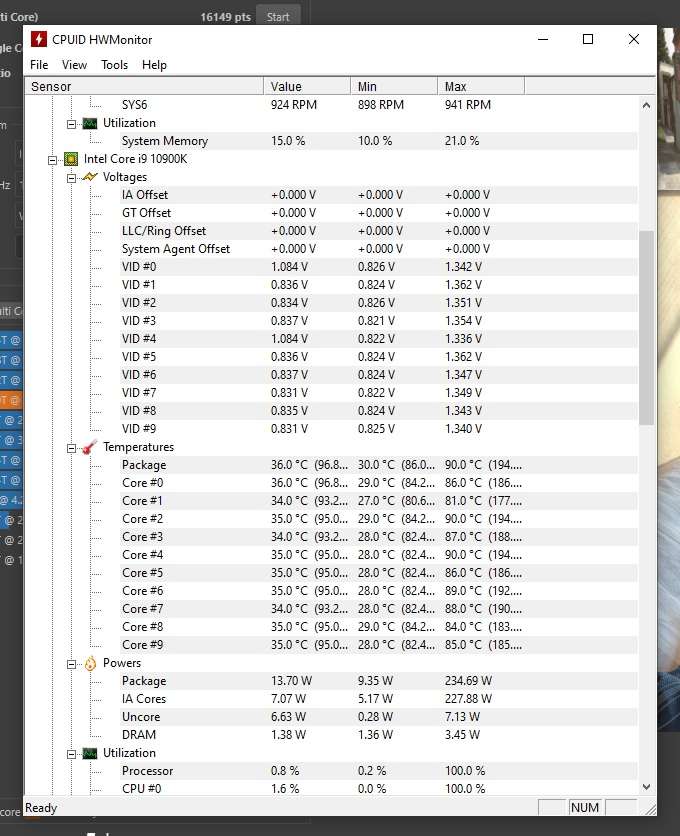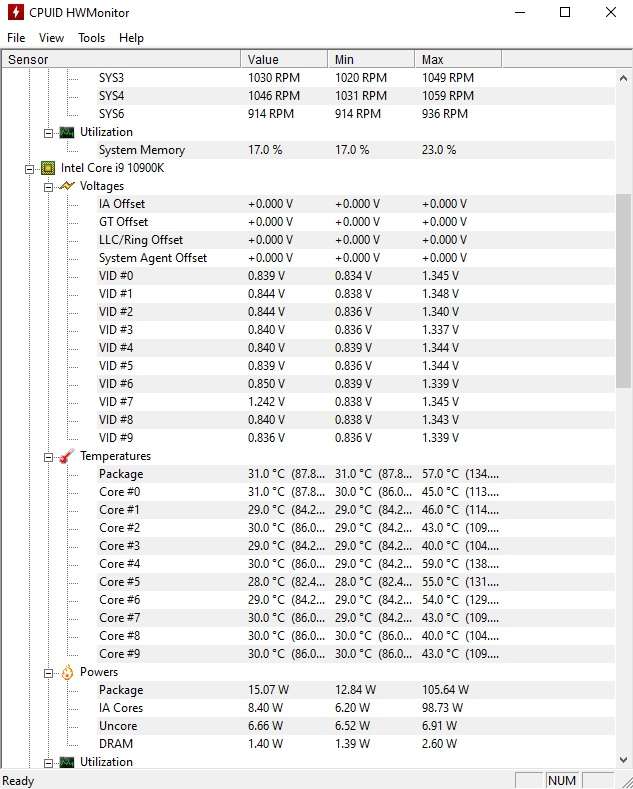Hello all. Just completed a build running a 10900k (turbos up to 5.1GHz) and Noctua NH-D15. Everything went well during the install; put the right amount of thermal paste using Noctua's included NT-H1 and eyeballed it the best I could when it came to lowering the heatsink onto the CPU. Once I started to catch the screws to secure it I noticed it slid around a bit as it was trying to catch but did not actually come up 😬 I then tightened the screws evenly and all the way. Fast forward to now and the temps idle around 28c-31c evenly for the most part. The only discrepancy (or maybe it's just me) is when I start to play games and I go back to hwmonitor, core 4 & 5 seem to have the highest recorded max temp out of the rest of the cores (average 10c difference). It's not a constant thing as when running prime95 the temperatures stay fairly close to each other but get an occasional temperature spike on a random core. The attached pic is playing BFV for around 45 minutes. Another thing to mention is I adjusted the cpu fan curves in MSI's bios as the stock ones were geared more towards keeping things quiet and not cool. My biggest concern when building a pc is installing the heatsink and applying the right amount of grease to get the best temperatures possible given the hardware and was just curious as to if this is normal and okay or maybe I would benefit from reseating it? Thanks for the help.





